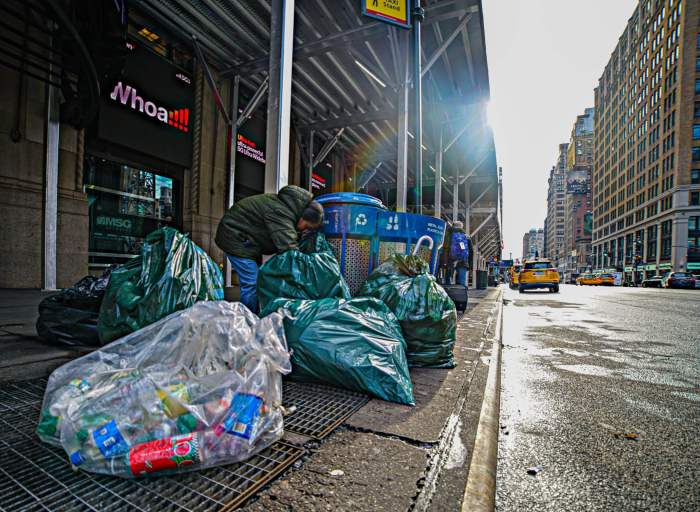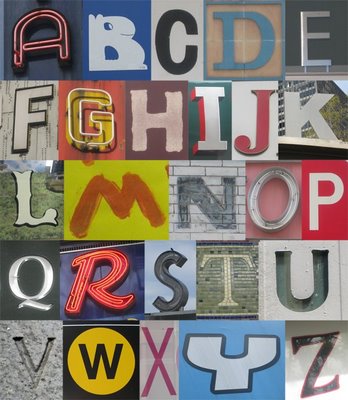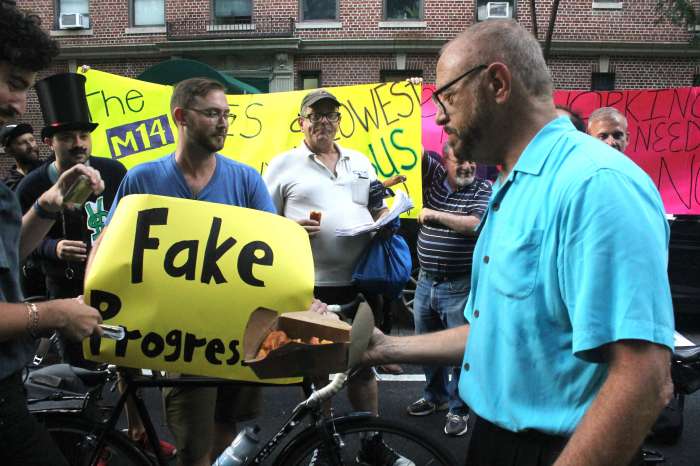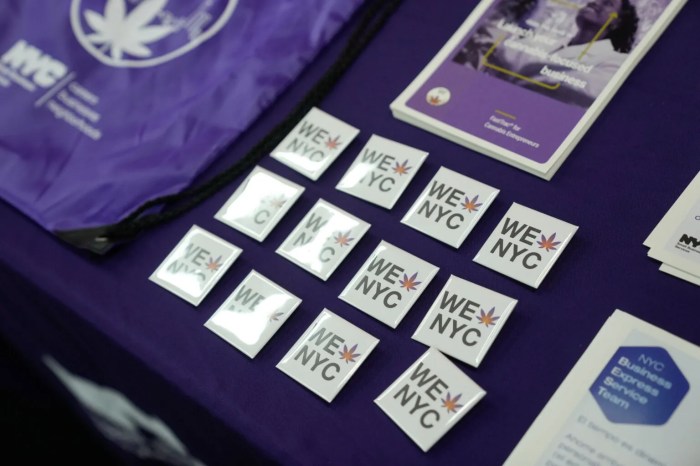Inclusiveness and landmarking
To The Editor:
Re “C.B. 3 approves E.V. landmark plan at tense meeting” (news article, July 28):
Thank you, The Villager, for covering the vital issue of the East Village Historic District. Unfortunately, some tactics used sowed distrust, poisoned things and caused an unnecessary trauma in our neighborhood, at a time when we need each other to pull together. Most of the nonprofits and our diverse East Village faith organizations and their leaders would embrace and celebrate the landmarking. Most of them value the worthy work of landmarking. What has been absent is real inclusion of them — those who will be most affected — a process of noncommunication that betrays our legacy of great social movements here in our Lower East Side, the East Village.
The real, ongoing costs to landmarked institutions go unmentioned or have been downplayed. Promises of real monies available are most often empty. Communities that have preserved this area for sometimes more than 100 years are asked to sit silent as relative newcomers publicly read them their own history. Yes, we’ve long been carrying on the daily work and responsibility of preserving the very facades activists and politicians have now discovered. What’s been missing is stepping inside — helping to preserve the priceless living communities behind them.
A rare shining light to the city and world, how profoundly fortunate for all living or visiting here to be surrounded by such richly diverse, open-to-all, spiritual, cultural resources. We have asked for a return to the healthy work and process of respectful communication and mediation. There are genuine options to assure all. We can do this, together.
Anthony Donovan Donovan is a founder, Local Faith Communities of the East Village
Less food litter, fewer rats
To The Editor:
Re “Rats run rampant in Tompkins, new park group says” (news article, July 21):
The public’s recent alarm at the rat problem in Tompkins Square Park is well justified, as anyone who has walked the park at dusk will testify. Action is required both from the community and from the Parks Department if the rat population in Tompkins Square Park is to be reduced to an acceptable level.
Park users can make a key contribution in this effort by disposing of their trash, especially uneaten food, in the trash cans throughout the park. Less food litter, fewer rats: It’s that simple.
As a frequent visitor of Tompkins Square Park, I hope my fellow park users will join me in this effort to make the park more enjoyable for the entire community.
Sam Forman
BID represents residents, too
To The Editor: Re “Exposing the dirty facts behind the Soho BID plan,” talking point, by Peter Davies, July 28):
As a residential condominium owner at 40 Mercer St. and also a member of the Broadway Soho Business Improvement District Steering Committee, I support the BID as the best way to make Soho a more livable neighborhood. A BID allows residents like me, businesses and others to work together to address community issues and to provide services, such as sidewalk cleaning, which Broadway desperately needs.
By law, the BID board of directors must represent each property-owner group, as well as resident and commercial tenants, along with government and community board representatives providing oversight. As one of the 146 residential condo owners living on Broadway between Houston and Canal Sts., I look forward to ensuring that the residential perspective is always strongly considered during the decision-making process.
I and the other resident condo owners each pay $1 per year in BID assessments — one dollar. And each of the 14 residential co-operative properties will pay that same $1 per year.
We, the residents of the Broadway Soho BID, have participated in the BID-forming process, and the BID Steering Committee has responded to the concerns of residents — so why do opponents say this is a takeover by big real estate developers?
The BID proposal is good for residents. While the commercial property owners would be paying almost 100 percent of the BID’s proposed $550,000 budget, I am confident that residents will benefit. Let’s examine the facts. Let’s stop living in the past and decide to address Broadway the way it is today — and make it better for tomorrow.
Let’s support the Broadway Soho BID.
Alan Ballinger
BID will benefit us all
To The Editor: I have a unique perspective of the BID since I have been a Soho resident for nearly a decade and am the vice president of a company that has significant investments in the neighborhood. I am writing you this letter on behalf of myself, all of my Soho residential neighbors and the businesses throughout the neighborhood, since we all need the Soho BID.
Our company, Aurora Capital, owns and manages several of the largest retail spaces on Broadway, including the stores occupied by Armani Exchange, Forever 21, Hollister and Victoria’s Secret, which are all located within the proposed Broadway Soho BID. Our building at 568 Broadway, located at the northeast corner of Prince St., is one of the largest office buildings in the neighborhood. While collectively we will pay the highest annual BID assessments, we support this worthwhile opportunity for owners, businesses and residents alike, to work together for a better neighborhood.
As one of the 280 property owners working on Broadway between Houston and Canal Sts., I am aware that I and other commercial owners will fund almost 100 percent of the BID budget to provide services and improvements to the BID area. The 146 residential condo owners and the 14 residential co-op buildings along Broadway will each pay $1 per year in BID assessments. Regardless of who pays what, we all benefit from the BID plan.
With ACE absent from the street, I worry about the trickle-down effect of the dirty sidewalks on Soho’s Broadway and its future. How long will the thousands of workers, visitors, shoppers and residents tolerate an unattractive environment? This coming together of so much activity gives the street energy and provides the financial support for each and every Broadway property (commercial and residential). At the same time, it must be managed to everyone’s benefit; it cannot be left to unravel on its own to the detriment of all within and beyond the BID area boundaries.
The BID is where we begin as a diverse group of neighbors who need to be acquainted with one another, to stay informed and to be actively involved with our neighborhood.
We should all support the Broadway Soho BID.
Jared Epstein Epstein is vice president, Aurora Capital Associates
Shame on Chin
To The Editor: Re “BID plan for Soho’s Broadway corridor is now better” (talking point, by Margaret Chin, July 21):
I am flabbergasted that Chin has supported the BID. She clearly does not represent any of the Soho residents that are vehemently opposed to a BID. She has been elected to support our community, not big business. Shame on Margaret Chin for turning her back on her constituents.
Alison Lille
Let’s get real about Soho
To The Editor: As an owner of Crale Realty and Patchwork Media on Broadway in Soho, I support the BID as the best way for owners, businesses and residents to come together to find solutions to a variety of concerns that we, along Broadway, all share. I remember what Broadway looked like when I would visit my dad at the office, which is now the home of my company, as well as my brother’s. It was not this “artist” paradise. It was a perfect representation of New York City in the ’80s — dirty, unsafe and a place you really did not want to be after the sun went down.
Since then, the area has become thriving, but there are prevalent issues that still exist, such as safety, increased street vending and sanitation. A business improvement district does not depend upon donations, and the assessment fees generated from the BID area properties (along Broadway between Houston and Canal Sts.) are brought back to us in full to spend according to what we, as a community, think is important in the BID area. It is not a “tax” that goes to the city’s general fund to be spent any way.
We need a long-term, functioning organization that can deal with issues we know today and those that will appear in the future.
On another note, ACE is important, and it’s clear that without their service on Broadway, the Broadway corridor, the Soho neighborhood and the entire city suffer.
The BID is not here to promote new traffic to Broadway. Rather, it is a solution to managing Soho’s “success” and mitigating the negative impacts that increased traffic and congestion have brought to Broadway residents and commercial property tenants.
As one of these commercial property tenants working on Broadway between Houston and Canal Sts., I look forward to being a part of a group of individuals working together with many, many perspectives that have so much in common.Let’s support the Broadway Soho BID.
Lee Leshen Leshen is president, Crale Realty/Patchwork Media
Payback is coming
To The Editor: Re “BID plan for Soho’s Broadway corridor is now better” (talking point, by Margaret Chin, July 21):
Margaret Chin, shame, shame on you for endorsing the Soho BID after all your constituents rejected it.
You’ll never get our vote again.
Sheldon Seidler
To The Editor:
Re “BID not involved in zoning” (letter, by Brian Steinwurtzel, July 28):
Brian Steinwurtzel, the Soho BID Steering Committee chairperson, does not tell the truth when he says that “property owners, residents and businesses in the area” elect the business improvement district’s governing board. Only property owners count, and property owners with the higher assessment count more. The fact that only nine property owners, owning only 20 of the 169 properties in the proposed Soho BID, were able to form the BID by themselves, based on the fact that they owned more than 50 percent of the BID’s assessed value, makes Steinwurtzel’s claim that the BID represents “grassroots democracy” a complete and utter sham. The Soho BID — now renamed, appropriately, the BS BID — represents a local attempt at yet another corporate takeover, despite vocal and official community opposition. Community Board 2 unanimously voted against it. Virtually every speaker at community meetings has spoken against it. The retail and office tenants who would pay the BID’s bills as an addition to their rents oppose it. Only the corporate fat cats who put together the BID are unanimously for it, and Steinwurtzel, himself a real estate functionary of the BID’s corporate sponsors, is their mouthpiece. Ingrid Wiegand
To The Editor:
Re “Koch rebuts Peddler” (Scoopy’s Notebook, July 21):
Ed Koch made his comment that “gentrification on the Lower East Side is a good thing” on the Daily Beast, not 20 years ago, but more like 20 weeks ago.
As for his “I did that” comment — about how he allegedly “cleaned up” Tompkins Square Park — Koch must be tripping. Two years after Koch left office, then-Mayor David Dinkins closed Tompkins Square Park, bulldozed the band shell and rebuilt the park and playgrounds. That is what set the park on the road to what it is today. Koch had nothing to do with it. As I pointed out in my last letter (“The evil behind gentrification,” July 14), in the process of spatial deconcentration, Koch’s sidekick “Bubba” Ben Ward played the roll of deconcentrator, not gentrifier. Yes, there was a bad drug problem on the L.E.S. before Koch assumed power. However, the plague he talks about started in the middle of his regime, not at the beginning. It didn’t end until after Koch left office. Koch still seems to have squatters on his mind, so let’s talk about his alternatives. There were the piss-stinking doorways I described in my last letter, and of course Koch’s homeless shelter system. In 1986 I voluntarily ate lunch every day for a month at the Third St. Men’s Shelter. Several hundred people were herded through 5-foot-wide hallways, with people smoking, snorting and shooting drugs everywhere. Food was slopped onto a metal tray and you hoped to finish before getting robbed or a fight broke out. I also went through the shelter system three times, and it was even more violent and drug-filled. And, if I remember correctly, AIDS and TB were rampant throughout the Koch public service and penal systems. Personally, I think the alternative of people occupying an empty building, making a home for themselves and regaining control of their lives is “a good thing.” I’m sorry Ed Koch disagrees. Meanwhile, back on the streets, “Bubba” Ben’s cops were out of control. And I doubt anyone will ever forget back in August of ’88, when the cops rampaged up and down Avenue A for more than seven hours! No, Ed, I’m sorry, but I find it really amazing that you could be so proud of anything you did, or think you did, on the L.E.S.
Jerry Wade, a.k.a. Jerry The Peddler
To The Editor:
Verizon FiOS left a storefront on First Ave. at 15th St. in Stuyvesant Town months ago. Yet they’ve got FiOS guys on First Ave. hawking subscriptions no different than guys who sell fake Rolexes or knockoff bags. If the City Council is to enforce a law for buying a fake Rolex or knockoff bag, then it should double-fine people for buying FiOS from a flea market table now that Verizon has stopped paying rent. Billy Sternberg
E-mail letters, not longer than 250 words in length, to news@thevillager.com or fax to 212-229-2790 or mail to The Villager, Letters to the Editor, 515 Canal St., Suite 1C, NY, NY 10013. Please include phone number for confirmation purposes. The Villager reserves the right to edit letters for space, grammar, clarity and libel. The Villager does not publish anonymous letters.BID is not representative
Peddler right back at Koch
Fine FiOS ‘flea market’
















